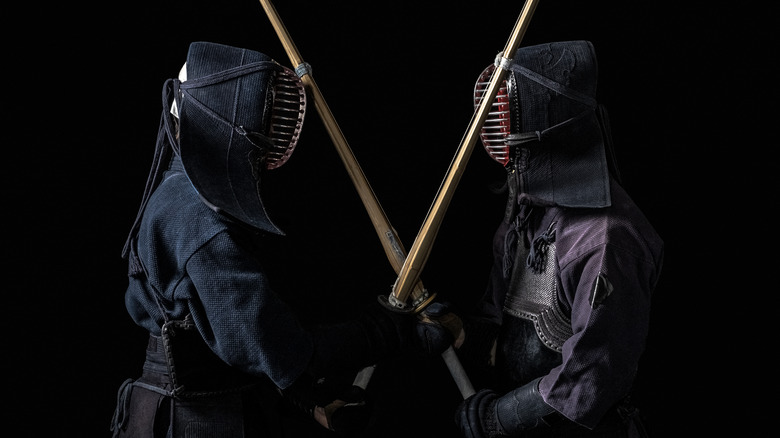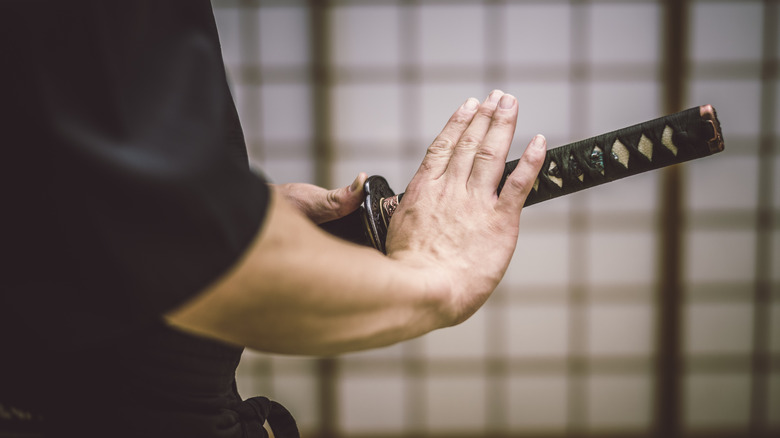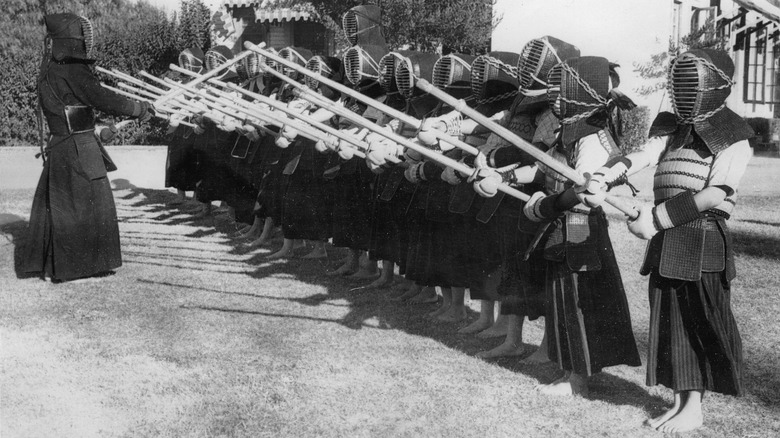What Is The Meaning Of Hanshi In Martial Arts?
We admit: It's fun to tune into a movie or show and watch some dudes spin-kick the crap out of each other. We've got classic, legendary fights like Bruce Lee vs. Chuck Norris duking it out in "The Way of the Dragon," newer jaw-dropping brawls like the Daredevil hallway scene in Season 1 of "Daredevil," and the absurd, cartoon-like ridiculousness of movies like "Kung Fu Hustle." We've got Jackie Chan, Donnie Yen, Tony Jaa, and more tearing up film after film in true demonstrations of real-life martial prowess. Martial arts masters — the best of the best — have been portrayed as noble and compassionate like Mr. Miyagi in the "Karate Kid" films, irascible and ludicrous like Pai Mei in "Kill Bill," or otherworldy and untouchable like Li Mu Bai in "Crouching Tiger, Hidden Dragon." There are so many martial arts everywhere that a site like Paste Magazine can post a gigantic, top 100 martial arts movie list.
So amongst this deluge of romanticized, embellished, and glorified depictions of martial combat, where can we find truth? Is it as easy as the experts make it look? Heck no. Is it as superbly architected and ballet-like as some films depict? Definitely no. In the real world, a fight might last five seconds until a dude howls "ow" and clutches his cheek, and the one who punched him also groans "ow" because his hand hurts. But if you ever come across someone dubbed "hanshi," just toss your hands up and give up immediately.
Different ranks for different arts
Black belts, white belts, purple belts, polka dot belts: There are a lot of different ways to rank someone according to martial art skill. Each art has its own methods. Karate, the mainstay art that many folks are familiar with, ranks from white belt to black and then different degrees of black, per MMA Channel. Aikido has a similar system but with fewer ranks overall, as the official Japanese Aikikai Foundation website depicts. Brazilian jiu-jitsu uses a highly stratified system that is also dependent on age, as the North American Brazilian Jiu-Jitsu Federation says. Within each art, ranking can also change depending on schools of thought and practice.
In the end, we've usually got pre-black belt ranks and black belt ranks. Pre-black belt ranks count from a higher number down to one, and then black belt ranks start with one and rise from there. As sites like Goju Karate explains, pre-black belt ranks are "kyu" ranks, and black belt ranks are "dan" ranks. So fifth kyu in karate — or "go-kyu" if we're using proper Japanese — is kind of intermediate, pre-black belt level. Shodan (first dan) is the lowest black belt level, godan (fifth dan) is an intermediate black belt level, judan (10th dan) is an ultra-mega-master rank, and so forth.
And hanshi? This also goes back to the Japanese language, which is where lots of martial arts — judo, kendo, aikido, karate, etc. — come from.
A gentleman of art and society
To understand martial arts descriptions like hanshi, we've got to do a deeper language-and-culture dive. As The Budo Bum outlines, we can take the word "sensei," a familiar term that many folks in the West might recognize. Sensei is a title like "mister" or "missus," but for teachers or doctors. So imagine you're in kendo class (pictured above), and you reply to your teacher. You'd say, "Yes, Bob-sensei." But what does Bob call himself? Well, it would be presumptuous of him to call himself "sensei," so he might speak of his job title, "kyoshi." He might say, "I'm a kendo teacher," or "kendo no kyoshi desu."
And so we finally get to hanshi. If someone is a high-enough rank in a martial art — high enough to be considered a master — then they've earned the title "shihan" instead of "sensei," as Fink Dojo explains. So if Bob passes a bunch of tests and becomes a master, then he's "Bob-shihan." Notice the two syllables of his title there, "shi" and "han"? Go ahead and switch them, and you've got "hanshi." Hanshi is like kyoshi, but for a master. In a practical sense, as Koryu.com explains, the "shi" in hanshi has its roots in feudal Japan and indicates that one is speaking to a high-ranking, respectable gentleman. To this day, it denotes an overall sense of conferred status and honor that extends beyond the classroom or dojo and to society as a whole.


